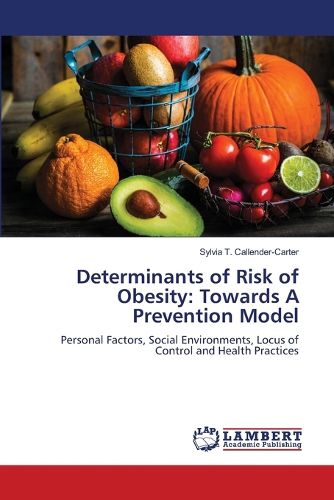Readings Newsletter
Become a Readings Member to make your shopping experience even easier.
Sign in or sign up for free!
You’re not far away from qualifying for FREE standard shipping within Australia
You’ve qualified for FREE standard shipping within Australia
The cart is loading…






This title is printed to order. This book may have been self-published. If so, we cannot guarantee the quality of the content. In the main most books will have gone through the editing process however some may not. We therefore suggest that you be aware of this before ordering this book. If in doubt check either the author or publisher’s details as we are unable to accept any returns unless they are faulty. Please contact us if you have any questions.
This descriptive-correlational study was to establish the socialenvironment, personal factors, health locus of control and health practices that increase the risk of obesity and with the information gleaned propose a model. The total number of respondents in the study was 512. The social support system of the respondents was good. The body image of the respondents was good and they had good health locus of control. There were low rates of physical activity among the respondents. Dietary intake of the respondents was rated poor. Medical checkup practices among the respondents was rated low. The independent variables found to be significantly correlated with BMI were: age, gender, educational attainment and civil status. Significant predictors of the risk for obesity include: (a) age (b) gender and (c) dietary practice. The respondent at highest risk of obesity was the mature, married man. Based on the findings the Global Obesity Prevention Model was developed.
$9.00 standard shipping within Australia
FREE standard shipping within Australia for orders over $100.00
Express & International shipping calculated at checkout
This title is printed to order. This book may have been self-published. If so, we cannot guarantee the quality of the content. In the main most books will have gone through the editing process however some may not. We therefore suggest that you be aware of this before ordering this book. If in doubt check either the author or publisher’s details as we are unable to accept any returns unless they are faulty. Please contact us if you have any questions.
This descriptive-correlational study was to establish the socialenvironment, personal factors, health locus of control and health practices that increase the risk of obesity and with the information gleaned propose a model. The total number of respondents in the study was 512. The social support system of the respondents was good. The body image of the respondents was good and they had good health locus of control. There were low rates of physical activity among the respondents. Dietary intake of the respondents was rated poor. Medical checkup practices among the respondents was rated low. The independent variables found to be significantly correlated with BMI were: age, gender, educational attainment and civil status. Significant predictors of the risk for obesity include: (a) age (b) gender and (c) dietary practice. The respondent at highest risk of obesity was the mature, married man. Based on the findings the Global Obesity Prevention Model was developed.